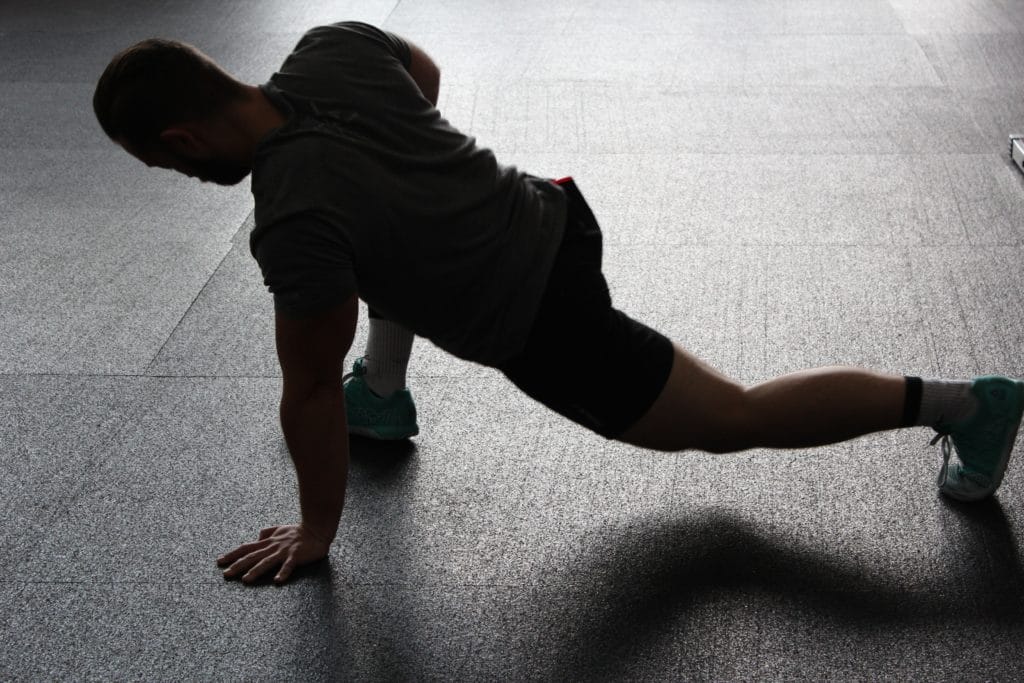Build A Mobility Workout in 3 (or 4) steps
The Mobility Workout Game Plan
Any good mobility workout or programming should be directed towards a specific goal. Knowing exactly what mobility or motor control deficiencies you have will help you design the perfect workouts and warm ups
Nearly all wonky movements are caused by the same few types of issues. If you understand those issues and address them methodically then your chances for success are greatly improved.

Just don’t play guessing games. You should know why you’re doing every movement correction.
Addressing these concepts is simple and usually follows a 3 or 4 step process. You can apply this to every joint, region and body part as well as any movement, exercise or lift.
If you aren’t sure of what you are doing or why then reach out to us here at Mission MVMT. Sometimes the details get a bit confusing.
Each step of the way I will be providing an instructional video that shows the concept being used to work on thoracic spine mobility.
Mobility Workout Step one- Tissue Reset
We all have some tight/angry tissue and many of us have tried to address it with tools on our own or even with some professional help. There are several techniques that fall into this category-
- Trigger point massage with a foam roller, lacrosse ball or tool
- Joint mobilizations
- Voodoo Flossing
- Diaphragmatic breathing
- There’s more
The end goal is to help overactive (sometimes called tight) muscles and tendons to relax. I say overactive because in large part they aren’t really short and tight; they are tense, as in the nervous system is telling them to contract.
Muscles get this way because of many factors but a large one is just lifestyle. Because we tend to stagnate in one position (usually a shitty one) our bodies get used to it.
We create a New Normal.
So once you reset and relax these muscles they will allow a joint or joints to go through a more full, smooth range of motion.
Step One- Tissue Reset/Mobilize
The abdominal muscles are huge contributors to thoracic spine movement. Try out this soft tissue release for your abdominal wall.
- Lie on the foam roller on your side
- Place the foam roller in between your ribs and your pelvis
- Rock back and forth hunting for ugly spots
Perform 30-60 seconds on each side.
Mobility Workout Step two- Lengthen What’s Short
This step can often be mixed in with number one. Your goal is to take those once overactive tissues and get them to a more appropriate length. Sometimes this happens as a result of step one but just in case I like to add some lengthening drills for good measure.
These drills can include:
- Prolonged static stretching- like the dreaded couch stretch
- Dynamic stretching- repeated short hold (3-5 seconds)
- Hold relax stretching- AKA PNF stretching.
- Eccentrics- negatives; slowly lowering a loaded movement into a deeper range of motion (AKA a stretch). Also super effective.
Stretching has been taking a lot of fire lately in the fitness world and I understand the reasoning but I don’t agree 100% that stretching is now taboo. Sometimes it can be an effective modality, sometimes not so much. The truth is that these techniques also have an effect on the nervous system and the results you see in a given session are likely due to that effect as opposed to actually making something longer.
But who cares? If it works, it works right?
Step 2- Lengthen
This is one of my favorite thoracic mobility drills. It is super effective and can be done pretty much anywhere.
- Sit on a bench or chair and cross one leg over the other
- Put your hands behind your head and rotate to one side as far as you can
- Lean to that same side
- Take big breath into your chest x 2
- Return to the upright position and rotate even further
- Repeat steps 3-5 so that you have done 3 reps to each side
Mobility Workout Step Three- Reload
OK, once the tight and short tissues have been addressed we need to start looking at their counterparts. This is were a little bit of anatomy helps but I will try to simplify for you.
The first two steps focus on overactive/tight/short muscles. Step three is going to look at the underactive/weak/long muscles.
These muscles tend to be the opposition to the short muscles. For example, the pecs tend to be tight and short because many (most?) people sit with rounded forward posture for a chunk of every day. If the shoulders slump forward the pecs don’t have the chance to lengthen so they find a new normal, short and tight. But the muscles of the upper back that attach to the shoulder blade are tugged into a lengthen position. Since they stay that way for long periods this becomes their new normal… long and underactive.
As the purpose of steps one and two is to lengthen short muscles similarly the purpose of step three is to undo these weaknesses. This is one instance where I strongly advocate for isolation exercises. In the case of the shoulder where the pecs are tight and short it is the rhomboids and lower/middle trap that are pulled long and underactive.
Step 3- Reload/Activate
Lumbar locked T-spine rotation is great for activating all the muscles that move this region.
- On all fours sit back on your heels
- With one had on the floor put your other hand behind you head
- Rotate your torso up towards the sky as far as your can
- Take a belly breath at the top
Repeat 6-8 reps per side
Mobility Workout Step Four- Reboot The Software
You may have heard the term motor programs before, if not no worries I’ll explain.
As we discussed the nervous system controls the length and tension of our muscles. The above steps are designed to help reset the nature of that length/tension relationship.
But!
Because it is likely that the system has been out of whack for a long time the body has now loaded motor program software that reflects its “new normal.” This is actually a good thing! It shows how flexible adaptable the body and brain can be. It will follow the path of least resistance and find a way to get the job done.
Unfortunately when your lifestyle involves a lot of sitting (for instance) but you want to go crush it in the gym this sets you up for inefficient and sometimes painful or even dangerous movements.
Enter the system reboot. You see the old motor program, the one you had years ago when you were learning how to move, it still exists. Somewhere in a dusty vault you have a copy of the original operating system. One that hasn’t been corrupted by the malware of bad movement (how long can I keep these computer metaphors going?).
Ok in all seriousness all we need to do is access that program and it will tie all of the other work you’ve done together.
Sometimes that reboot looks like a lift you are familiar with – a snatch, squat, press etc. Sometimes it will look like some weird, twisty, banded, lunge-y, press-y thing that has no obvious purpose. This largely depends on what needs development and what your goals are.
The goal of step four is to get your body working together again the way it was designed to. Like a high school band recital but with fewer braces and awkward haircuts.
Step 4- Reboot/Coordinate
Overhead squats are the perfect exercise to tie things together with. They require full body coordination with a strong emphasis on shoulder stability and T-spine mobility. Above all else remember to keep the bar above your feet the entire time.
- In a squat stance hold a bar with a wide grip in the back rack
- Press the bar over head
- Squat
- As you descend into a squat make sure to pull back so the bar stays above your feet
Perform 6-8 reps
Mobility Workout Practice
So let’s take this into the real world. Try this mobility workout circuit for your T-spine with the parts we just went over.
2 or 3 rounds of
- Foam Roll Abs 30 seconds
- Rib cage opener 3 each side
- Lumbar locked rotation x 6-8 each side
- Overhead squat x 6-8 reps

Ian Elwood, MA, LAT, ATC, CSCS
Ian has been practicing as an Athletic Trainer for over 14 years. More than half of which have been spent with military forces including US Marines and Air Force Pararescue. He loves sharing and is enthusiastic about helping anybody who wants to move better and train pain-free.
